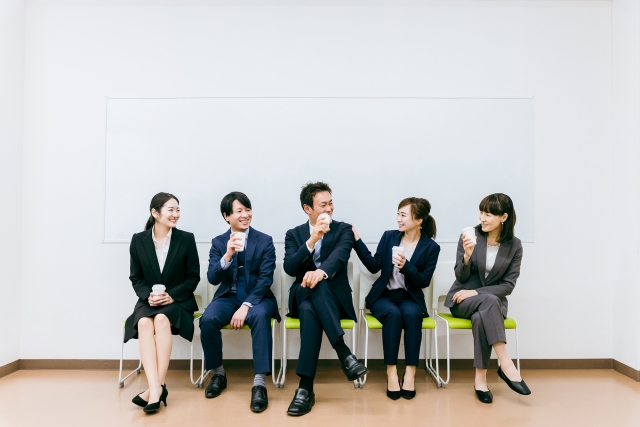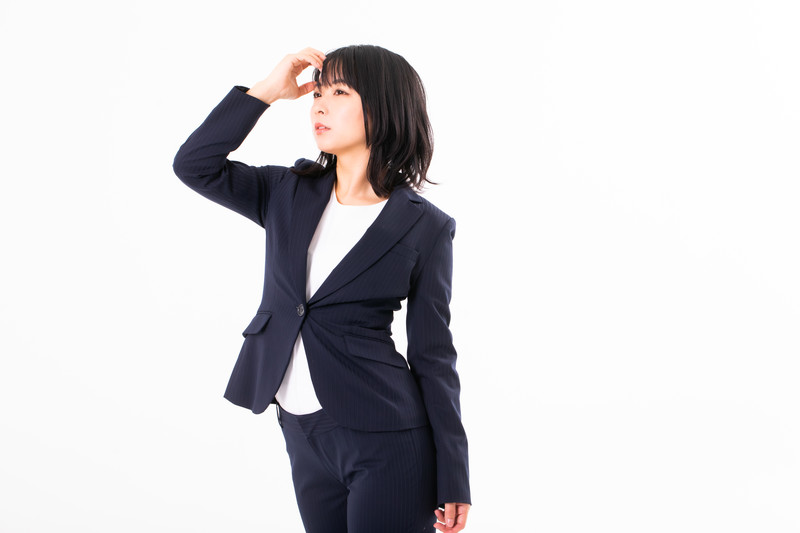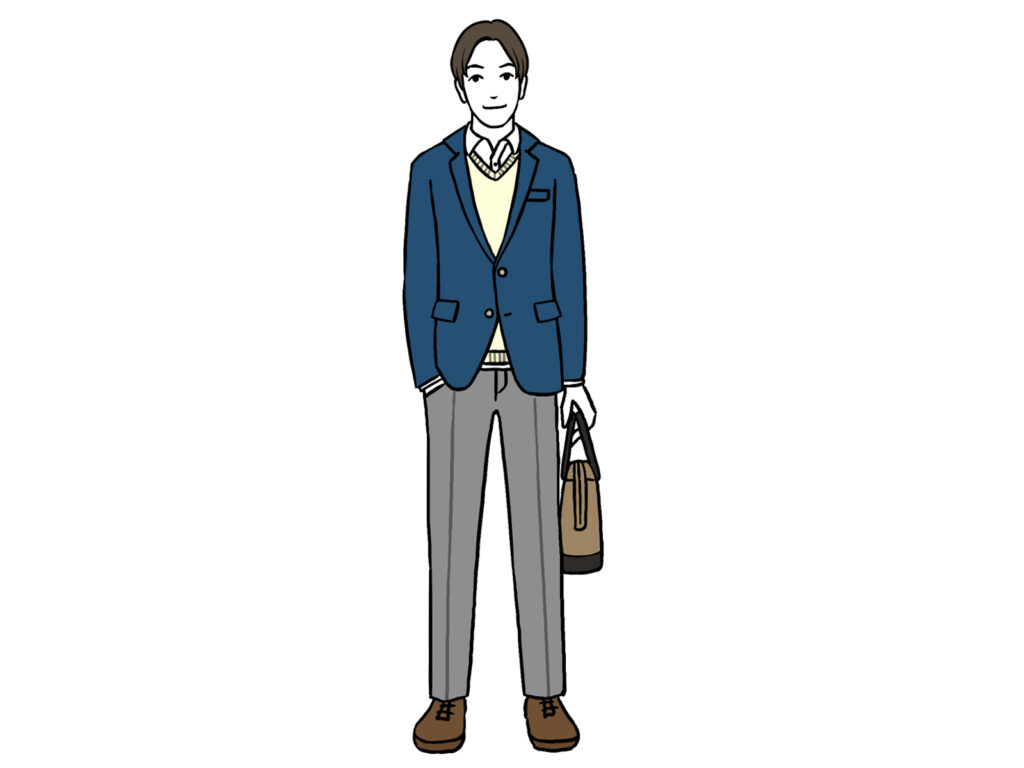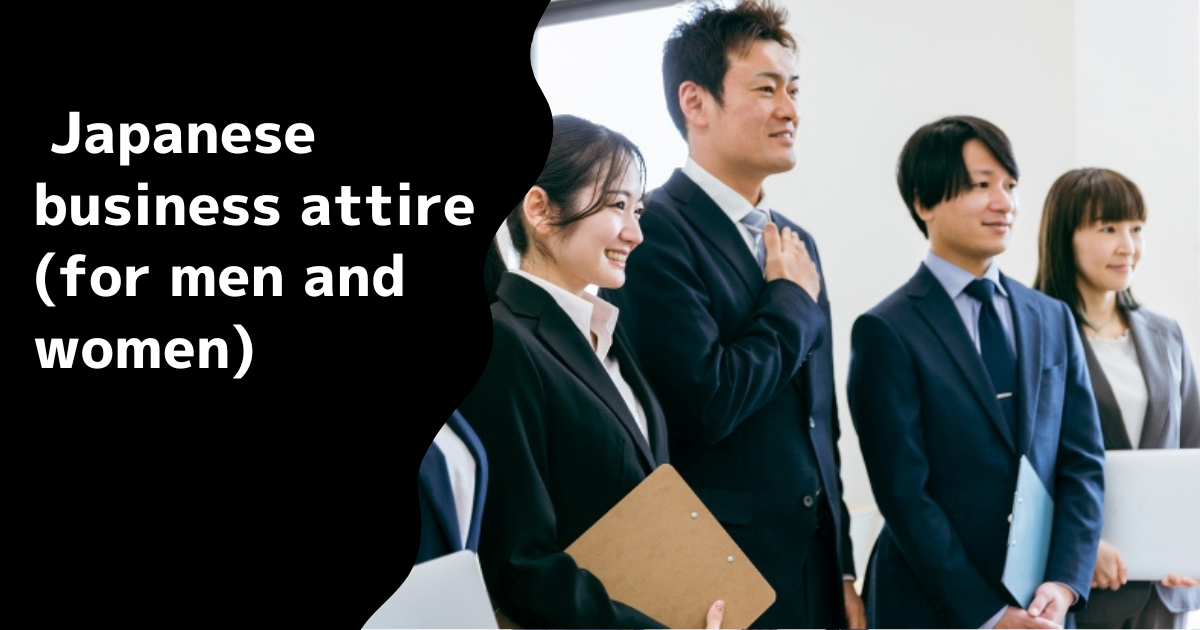If you have a chance to work in Japan, you might wonder what is an appropriate attire for business.
When you have an opportunity to come to Tokyo station in the daytime, you see a lot of business persons wearing blackish suits, so you might guess blackish suits could be appropriate for the business in Japan.
I am afraid that Japanese business attire is not that simple and it requires distinctive and complicated rules of outfit, and if you mischoose it you could be thought of as a less professional person and make a negative first impression on your supervisor, business partner/customer and possibly fail to build a good business relationship.
In this article, I’d like to cover the following matters.
-Japanese business attire
-appropriate attire for a job interview
-appropriate attire for working
After reading this article I hope you understand the overall appropriate business outfit in Japan and have a successful relationship with your supervisor, business partner and customer.
*I just explain example of outfit choices and it always depends on the types of industry or each company culture.

Let me introduce myself.
I am Hiro from Tokyo, Japan, born and raised here.
I have working experience in Japanese companies (logistics and manufacturing) as an international sales for almost 10 years, so I well understand Japanese work culture including business attire.
Japanese business attire

Japanese business attire is based on Japanese distinctive politeness. Casualty or sexuality should never be included in it.
It seems really difficult for non-Japanese people to understand their rule, and could be tolerated by Japanese people if non-Japanese people mischoose outfits for business.
However, if you mischoose it, it could be thought to be less professional and if you are a salesperson, you are possibly not trusted by your customers and it is likely to lose business from them.
To avoid negative performance due to your outfit, I’d like to introduce appropriate attire for your successful work in Japan.
Appropriate attire for a job interview

There is a particular colour suit that is suited for job interviews in Japan.
Man
Suit: A blackish suit. Both the jacket and bottom are the same colour, and you need to prepare a jacket to wear during the interview even in the hot summer.
Shirt: White colour shirt
Tie: The tie must be worn. (You should avoid black colour because it associates with funerals in Japan)
Sox: Solid black or grey
Shoes & belt: black or brown (the colour of shoes and belt should be synchronized)
Woman
Jacket: a blackish Jacket
Bottom: suit trousers or a skirt (the same colour as the jacket is better) if you wear a skirt it should be long skirt enough to hide your knees.
Shirt: white blouse or a cut-and-sew T-shirt
Hairstyle: tieing hair if it’s long
Shoes: Pumps
Those uniforms are suited especially for job hunting for students (Japanese high school or university students normally start to job hunt in their final year). When a job changes you could be more casual wearing a suit, but if you don’t know how to casually wear, the above-explained example for a man or woman is much safer even if it is a job change interview.
If you are interested in a job interview in Japan, please also refer to the below article.
appropriate attire for work
Proper attire for business varies according to the types of jobs and I’d like to explain according to profession.
Attire for a steady profession which requires credibility


Steady professional workers in public facilities, banks or real estate agencies are usually required to wear a blackish formal set-up (Top & bottom set) suit.
Credibility is required for those professions and blackish formal set-up suit is thought to make a good impression on their customers.
Required attire is as follows.
Suit: Blackish (navy or dark grey) coloured top & bottom set suit (but jet black colour is not appropriate for business because it associates funeral or marriage ceremony). A jacket is always required to wear when meeting with a customer.
Bottom (for a lady): suit trousers or a skirt (the same colour as the jacket is better) if you wear a skirt long skirt enough to hide your knees is better.
Shirt: whitish shirt (white blouse or a cut-and-sew T-shirt for ladies)
Tie: a tie is required for men (jet black tie is not appropriate because it associates funeral)
Belt & Shoes: Blackish colour (or dark brown. Belt & Shoes should be the same colour)

My wife works in an asset management department at a bank in Tokyo and she often wears a grey top & bottom set suit which is appropriate for meeting many clients every day.
Attire for a normal profession
Normal professional workers are allowed to wear a little casual business outfit such as follows.
Man

A little casual business outfit for a man is as follows.
Suit: the colour & textile of the jacket and bottom are different (but both are still grey, navy or darkish colour). A jacket is always required to wear when meeting with a customer except in summertime.
Tie: normal tie (plain or striped colour) *Some companies won’t require wearing a tie.
Shirt: whitish (Pink, light blue or light grey) plain or striped shirt.
Bottom: suit trouser is basically required, but some companies allow jeans (not faded) or chinos.

I am a sales in a manufacturing company and I often wear a little casual suit with a tie.
Woman


A little casual business outfit for a woman is a jacket and trousers or skirt such as follows.
Jacket: tailored jacket or no collar jacket (It is required to wear when meeting with your customer/business partner)
Shirt: a blouse or a cut-and-sew T-shirt
Cardigan: Cardigan is usually worn over a blouse or a cut-and-sew T-shirt
Trousers: Wide pants (if you like relaxed bottom) or tapered pants (if you like a slim silhouette)
Skirt: long skirt or flared skirt enough to hide knees
There are some points to be careful for the outfit:
- The colour of the Attire should be calm & moderate such as black, white, grey, navy, beige or brown. (Maximum 2 or 3 colours choice in your outfit)
- If you use patterned items, use simple and moderate.
- It should be an appropriate size for your body shape. If it is oversized, it looks lazy and casual.
- You need to avoid sexy and revealing outfits such as camisoles, tank tops or short skirts. (It is important in Japanese business customs)
Conclusion
In this article, Japanese business attire was introduced and I hope you will understand the appropriate outfits for working in Japan.
The requirement of attire varies according to the type of job and each company’s culture as well, so you should ask your supervisor if you want to know detailed rules or check other colleagues’ outfits for reference.
I wish you will have successful business life in Japan.
Thank you for reading my article till the end.




コメント Comment